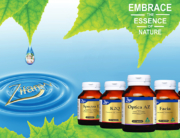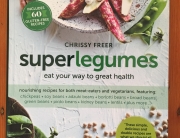I would love to share with you some of my favourite herbs that I am using at the moment for this awful flu season. I am seeing many of my patients relapsing with acute infections not just once but up to three times!
I would encourage you to have a bottle of my flu tonic on hand and start dosing acutely as soon as you feel a sore throat or headache coming on.I have noticed clinically that there are 3 viral strains circulating at the moment and this is the summary of how the symptoms;
- Gastro pre sensation with resolution within 48 hours
- Sore throat, aching upper arms, seems to persist for a quite a while
- Headache, dry cough with vomiting at the end of a coughing fit
Also, don’t forget about the relevance of having optimal vitamin D levels during the flu season – ask your GP to check your levels ASAP and supplement if necessary!
Herbal extracts can be highly effective for treating an acute cough and other common symptoms associated with upper respiratory tract infections such as a runny nose, sore throat, and headache. They also have an excellent safety profile. It’s ironic that many pharmacy cough mixtures contain active principles that were originally of botanical origin, obvious examples being codeine (opium poppy), guaifenesin (the guaiacum plant) and pseudoephedrine (from ephedra).
And whilst the isolation and synthesis of these active principles have given us some very powerful medicines, it has also created a new set of problems: powerful effects matched by equally powerful and negative side effects. When high-quality botanical extracts are used there is less likelihood of these problems occurring.
In the treatment of coughs and colds, herbal extracts do exert anti-tussive, expectorant and mucolytic effects, although these specific actions are balanced out by other broader effects, which may be due to a synergism of the ingredients present. Herbal preparations are also nutritive, as plant extracts contain a host of valuable minerals and nutrients in a form that is readily absorbed.
Herbal antitussives: when you need to stop a cough in its tracks!
Herbal formulations for the treatment of acute coughing are gentle, effective and safe. They are particularly appropriate for use in children, drop dose for babies. Some herbs do have a direct anti-tussive action similar to the opioid and non-opioid antitussives used in commercial cough preparations, without the risks associated with these compounds. Prunus serotina (wild cherry bark) for instance, can be highly effective in stopping a dry, non-productive cough, as can the Ayurvedic herb adhadota.
A cough suppressant is sometimes warranted, especially when you have an annoying non-productive/dry cough, which can be the cause of ongoing distress and sleeplessness. If not suppressed, such a cough can cause further irritation and inflammation of the tissue lining the respiratory tract.
Expectorants/demulcents
One such herb with a broad range of activity is Glycyrrhiza (licorice root). Licorice is a superior demulcent, with appreciable anti-inflammatory properties, it also has expectorant and antitussive actions. Verbascum (Mullein) is another good example of a herb with a broad range of activity: it contains components (saponins) that act as an expectorant, and like licorice it has mucilage, which acts as a demulcent. It also contains iridoid glycosides, which are anti-catarrhal (loosening tenacious mucous in the airways).
Elecampane is a powerful herbal for treating coughs and colds. It has expectorant, spasmolytic, bronchospasmolytic, diaphoretic and antibacterial properties. It’s essential oils have a relaxant action. Elecampane also contains mucilage which helps to sooth inflamed mucous membranes. The herb has useful antibacterial properties. Other important respiratory demulcents are Althaea (marshmallow) and Plantago (plantain & ribwort). They are specifically indicated in the case of a rasping, dry, irritable non-productive cough, for coughing and episodes of wheezing, particularly in children.
Echinacea The available research indicates that the clinical effects of (some) Echinacea preparations are likely to be due to several components which may have synergistic effects.” Echinacea can also enhance, balance and modulate the immune system and there is good evidence for its significant immune enhancing effects. It stimulates the immune system by enhancing T-cell activity, macrophage phagocytosis, antibody binding and natural killer cell activity as well as increasing levels of circulating neutrophils.
It also works as a local anaesthetic; and has anti-inflammatory, hormonal, antiviral and free radical–scavenging activities. There are some clinical trials that have shown Echinacea to be ineffective. In many cases this incongruity is due to researchers using poor quality Echinacea products, most likely deficient in sufficient quantities of active constituents necessary to exert a definitive clinical effect. The doses commonly used in trials are also notoriously low, particularly in acute conditions such as colds, where a higher dose is always warranted in the short term. The activity of Echinacea also depends on the form of administration, the quality of the raw materials and extraction procedures used. Overall Echinacea can reduce both the severity and duration of colds and flu.
Thyme A popular culinary herb, Thyme has a long history of use in Europe for the treatment of dry, spasmodic coughs. It also soothes inflamed mucous membranes in bronchitis. Thyme has constituents, which provide antitussive, antispasmodic, and expectorant actions. It is also a very useful antibacterial and antiseptic agent. The primary constituents are the volatile oils, which include the phenols thymol and carvacol. These are complemented by the actions of flavonoids along with saponins. Thyme is also a spasmolytic, helping to reduce involuntary smooth muscle spasm, an action it shares with licorice.




















































































































































